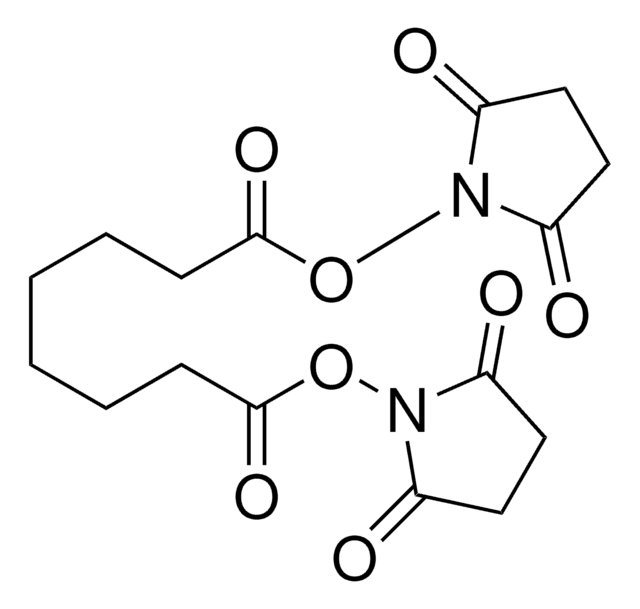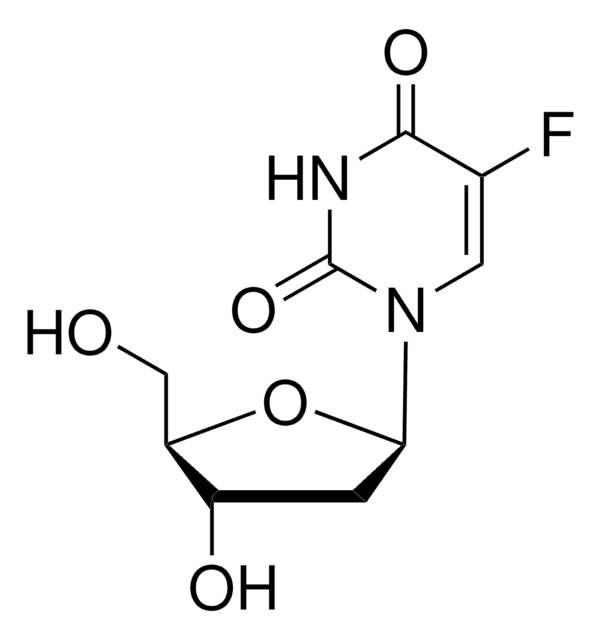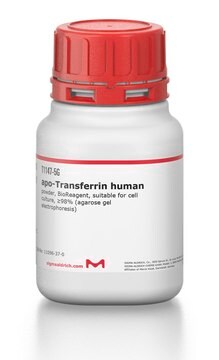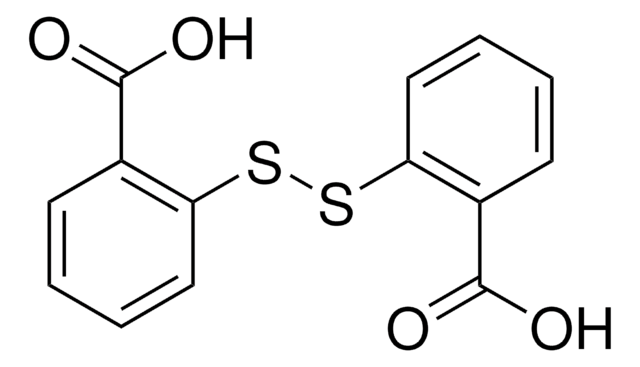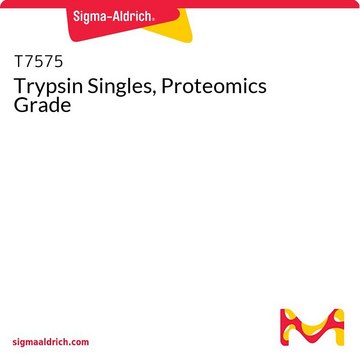322133
DSP, Water-Soluble
Synonim(y):
3, 3-ditio-bis-(sulfobursztynoimidylo)propionian, DTSSP, Sulfo-DSP
Zaloguj sięWyświetlanie cen organizacyjnych i kontraktowych
About This Item
Kod UNSPSC:
41116133
NACRES:
NA.24
Polecane produkty
Próba
≥94% (HPLC)
Poziom jakości
Formularz
solid
producent / nazwa handlowa
Calbiochem®
warunki przechowywania
OK to freeze
desiccated
kolor
off-white to light tan
rozpuszczalność
water: 6 mg/mL
Warunki transportu
ambient
temp. przechowywania
2-8°C
Opis ogólny
Bifunctional cross-linker. The disulfide bond can be cleaved with 1% NaBH4, 50 mM DTT, or 100 mM β-mercaptoethanol. Has been used to immobilize proteins on supports containing amino groups. Chemical crosslinkers are used to covalently modify proteins for studying ligand receptor interactions, conformational changes in tertiary structure, or for protein labeling. Crosslinkers are divided into homobifunctional crosslinkers, containing two identical reactive groups, or heterobifunctional crosslinkers, containing two different reactive groups. Water-soluble cross-linking reagents help to avoid the use of organic solvents such as dimethylformamide (DMF) and dimethylsulfoxide (DMSO) when preparing bioconjugates.
Ostrzeżenie
Toxicity: Irritant (B)
Rekonstytucja
Following each use, purge the original vial with inert gas and refrigerate (4°C). Unstable in aqueous solution; reconstitute just prior to use. Alternatively, the solid DSP can be added directly to the sample to minimize hydrolysis. Hydrolysis is more pronounced in dilute protein solutions and can, therefore, be minimized by using more concentrated protein solutions (>5 mg/ml). For storage of stock solutions, reconstitute in anhydrous DMSO.
Inne uwagi
Howard, A.D., et al. 1985. J. Biol. Chem.260, 10833.
Lee, W.T., and Conrad, D.H. 1985. J. Immunol.134, 518.
D′Souza, S.E., et al. 1988. J. Biol. Chem.263, 3943.
Yamada, H., et al. 1981. Biochem.20, 4836.
Annunziato, M.E., et al. 1993. Bioconjugate Chem.4, 212.
Lee, W.T., and Conrad, D.H. 1985. J. Immunol.134, 518.
D′Souza, S.E., et al. 1988. J. Biol. Chem.263, 3943.
Yamada, H., et al. 1981. Biochem.20, 4836.
Annunziato, M.E., et al. 1993. Bioconjugate Chem.4, 212.
Informacje prawne
CALBIOCHEM is a registered trademark of Merck KGaA, Darmstadt, Germany
Ta strona może zawierać tekst przetłumaczony maszynowo.
Kod klasy składowania
11 - Combustible Solids
Klasa zagrożenia wodnego (WGK)
WGK 2
Temperatura zapłonu (°F)
Not applicable
Temperatura zapłonu (°C)
Not applicable
Certyfikaty analizy (CoA)
Poszukaj Certyfikaty analizy (CoA), wpisując numer partii/serii produktów. Numery serii i partii można znaleźć na etykiecie produktu po słowach „seria” lub „partia”.
Masz już ten produkt?
Dokumenty związane z niedawno zakupionymi produktami zostały zamieszczone w Bibliotece dokumentów.
Klienci oglądali również te produkty
Nasz zespół naukowców ma doświadczenie we wszystkich obszarach badań, w tym w naukach przyrodniczych, materiałoznawstwie, syntezie chemicznej, chromatografii, analityce i wielu innych dziedzinach.
Skontaktuj się z zespołem ds. pomocy technicznej

